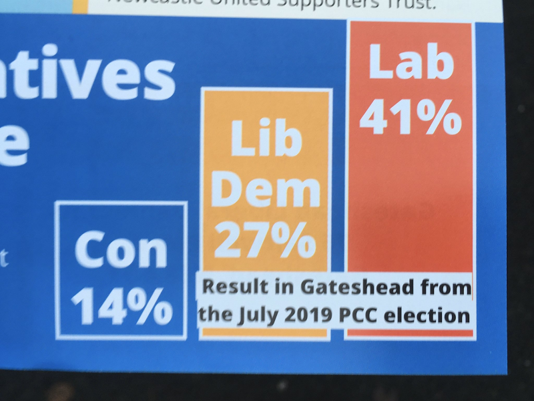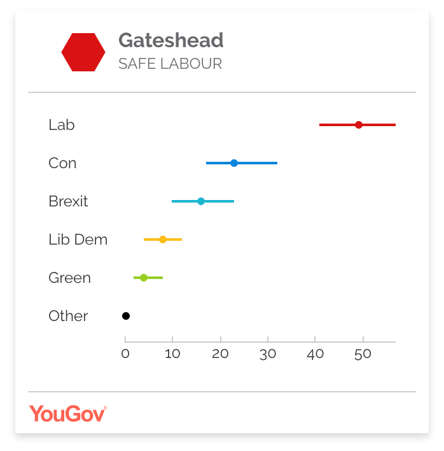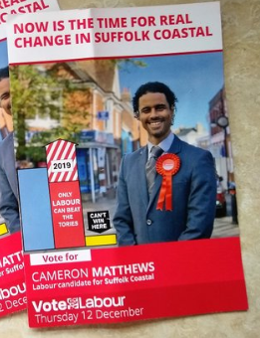8 December 2019, 1.14pm (updated)
Boris Johnson doesn’t know how many kids were born under his watch
In an interview with the Sunday Times today, Boris Johnson predicted that “Romance will bloom across the whole nation once we get Brexit done”, claiming that “There was [a baby boom] after the Olympics, as I prophesied in a speech in 2012, it was quite amazing. There was a big baby boom.”
Now we cannot pass comment on whether the planned departure from the EU (two weeks before Valentine’s Day, no less) will lead to a flurry of births come autumn.
But we do know that Mr Johnson is wrong in saying there was a post-Olympics baby boom. In fact the exact opposite happened.
In 2012 there were 730,000 births in England and Wales, which fell to 699,000 in 2013, down 4.3%. In London specifically, the fall was almost identical - 4.4%.
This meant that the year after the Olympics, which Mr Johnson said saw a baby boom following all the expected summer 2012 amoureuse, actually saw the largest fall in the number of births in 38 years.
So how has Mr Johnson got it so wrong? Well, back in 2012 when he was Mayor of London, Mr Johnson told his statisticians to model the number of London births to test his theory.
The statisticians results predicted a sizeable increase in births. This was then proved to be not the case when the Office for National Statistics (ONS) published actual birth statistics (not models) in 2014.
As for why the birth rate dropped so significantly, various theories were proposed. The ONS suggested the precariousness of the jobs market and changes to benefits may have been factors.
Professor of Geography at Oxford Danny Dorling suggested that the change is less to do with why the number fell in 2013, but rather why it grew through the 2000s. He suggests it was a result of more women choosing to have children later in life from the 1990s onwards.
But perhaps the fall in births is a direct consequence of the British public spending a summer watching marble-carved demigods run, leap, and twirl in flattering dappled sunlight, and so finding their own partners somehow wanting. We may never know.
Honesty in public debate matters
You can help us take action – and get our regular free email
Party political literature: always read the label
On our quest to find party political literature passing itself off as newspapers and magazines, our attention has been drawn to this pamphlet from the Conservatives. ‘You & your family’ bears more than a passing resemblance to real life mags like Pick me up and Chat, albeit with a political twist.
We wrote about political parties churning out fake local newspapers yesterday, and as with many of those examples, this pamphlet only seems to indicate that it originates from a political party in the small print at the bottom of the front page. And if they’re thinking of making this a regular feature, there is already a parenting magazine in the USA that shares the name.
Props to First Draft for finding this one. Please do tweet or email us at team@fullfact.org if you spot any more.
Sajid Javid on homelessness
This morning on Sky News, Sajid Javid claimed that homelessness had fallen by half following a 2008 peak under Labour.
This does not seem correct. Homelessness in England was about the same in 2017 as in 2008, and has risen since 2010, by the main measure.
We’ve asked the Conservatives whether Mr Javid was referring to something else.
We’ll publish a full fact check shortly.
Sign of the Times: Party political "newspapers"
As sure as night follows day, an election campaign leads to a flurry of dodgy graphs being printed on campaign leaflets.
But another feature, which has been discussed less, is election campaign material which appears to be something else altogether.
Consider this leaflet from the Liberal Democrats, which was spotted in Winchester, and is made up to look like a local newspaper. It includes a made up title, “Mid Hampshire Gazette”, and refers to itself as a “free newspaper”.
The front page of the newspaper sings the praises of Jo Swinson and local Lib Dem candidate Paula Ferguson, and it’s only in the small print in the top right hand corner that it’s clarified that this isn’t a genuine local newspaper, but party literature.
Katie French, who edits the nearby Basingstoke Gazette said: “This is a flagrant attempt to manipulate voters by presenting them an advertisement in the form of a front page news story. Frankly it is insulting to the public who deserve better from one of the leading political parties.”
It’s far from the only example this election. The Liberal Democrats did something very similar in Lambeth, circulating campaign material in the form of a “newspaper” they called“Lambeth News”.
The Conservatives have circulated similar materials made to look like local newspapers in Pudsey, West Yorkshire and West Bromwich West. The Pudsey edition bears a passing resemblance to the Pudsey Times, a genuine local paper which previously circulated in the area.
The Conservatives have also circulated materials with the appearance of a lifestyle magazine and local newsletter, neither of which contained any party branding on the front and only stated in the smallprint at the bottom the names of the candidates they were printed on behalf of.
Another example of a campaign newspaper comes from the Brexit party, but it makes clear that “The Brexiteer” is “the newspaper of the Brexit party” and that the front page article is “by Nigel Farage”.
We’ve not seen any examples from the other parties so far, but may have missed them. Please send us any you spot by emailing team@fullfact.org.
Parliament didn't block the Queen's speech
On yesterday’s Andrew Marr show, Boris Johnson claimed that “one of the reasons we’re having this election is because we have a Queen’s Speech that was blocked by parliament”.
That’s incorrect. Parliament voted in favour of the government’s Queen’s Speech in October. The speech is put forward by the government, setting out its proposed policy agenda for the new session of parliament. Losing a vote on the speech has historically been considered as parliament showing it has lost confidence in the government.
The Queen: Not Dead
On Sunday night, the Queen was trending on Twitter. As one Twitter joke goes, a name trending is usually a sign of very bad news.
People were debating whether a screenshot from a WhatsApp group had announced the death of Queen Elizabeth II.
The WhatsApp screenshots do not have a date on them, but were posted on Sunday evening and said that the Queen’s supposed death would be announced at 9.30 am tomorrow. Considering the calm with which Monday has passed, it feels safe to say that the Queen is not dead. If something had happened to her, it would be odd for royal social accounts to be sharing photos from her grandson’s trip to Kuwait.
However, it felt for some all too appropriate that in an era of chaotic and unpredictable news cycles, a head of state’s death might be leaked via a lads WhatsApp group.
WhatsApp has long been a source of rumours and misinformation, with monitoring the claims that spread there an almost impossible task. It’s worth taking the information found there with a pinch of scepticism.
If you’re interested in what actually happens, protocol-wise, when a monarch dies, you can read about that here.
Fact checking two seven-way debates
On Friday and Sunday nights, the BBC and ITV broadcast two televised seven-way debates between leaders and other representatives of the major parties running in Great Britain: the Conservatives, Labour, the Scottish National Party, the Liberal Democrats, Plaid Cymru, the Green Party and the Brexit Party.
We checked the parties across topics, including Brexit, the NHS, criminal justice and immigration. You can read our fact check in full here. You can also see our live fact checking responses on our Twitter account.
For more election coverage; including fact checks of debates, manifestos, and circling misinformation, head to our 2019 election page.
Honesty in public debate matters
You can help us take action – and get our regular free email
29 November 2019, 2.12pm (updated)
Fact checking Boris Johnson on LBC
This morning Conservative party leader Boris Johnson took part in an audience phone-in with Nick Ferrari on LBC Radio. Full Fact was at LBC’s offices to fact check the claims the Prime Minister made. (LBC has also invited Labour leader Jeremy Corbyn and Liberal Democrat leader Jo Swinson to do similar phone-ins, and we will fact check them as well.)
Mr Johnson was asked about a number of topics from the NHS and social care, to police numbers and education funding.
He was unable to provide a figure for the number of post-Brexit trade deals which have been concluded—there have been 18 ‘continuity deals’ with 48 countries, but while we’ve held preliminary discussions with some countries we can’t yet formally negotiate on ‘new’ deals. And when asked about the number of buildings which have had Grenfell-style aluminium cladding removed from them he was unable to give a figure—118 buildings have so far had work completed, with a further 318 identified as in need of work.
He also seemed to extend a Conservative manifesto promise on tax, transforming it from a commitment to not increase the rate of income tax, national insurance and VAT, to a pledge not to increase these taxes at all. That’s something quite different.
You can read our full fact check of all Mr Johnson’s claims here.
Tree-mendous?
A Labour policy regarding the planting of more trees has ruffled a few leaves this morning.
Labour announced its “plan for nature” on Thursday morning, which included a pledge to plant two billion new trees by 2040. The Conservatives and Lib Dems proposed similar plans, but with fewer trees.
As some have worked out, hitting this target would mean planting around 300,000 trees a day. This plan has received some criticism for the size of the proposed figure and the question of where space would be for these trees.
The task of planting hundreds of thousands of trees a day isn’t an impossible idea; the BBC once lead an initiative which planted an estimated 230,000 trees in an hour in 2009, using mainly volunteers. In Turkey, over 300,000 were planted in an hour in 2019.
It’s also debatable whether there would be enough space in England and Wales for the proposed billions of trees. Between 88% and 99.9% of the UK isn’t “developed”, but this doesn’t necessarily mean this is free land—we are unaware right now exactly where Labour would want to plant their new trees.
The plan would also be affected by what type of trees are planted, as, quite simply, some trees are bigger than others. As a *very* rough estimate, Labour’s plan would cover around 5% of current UK land.
In May the Committee on Climate Change published a report setting out that around 30,000 hectares of woodland need to be added to the UK in each of the next thirty years in order to reach net-zero carbon emissions by 2050. The Woodland Trust says that’s the equivalent of 1.5 billion trees by 2050. So Labour would need to plant at about twice that rate, to hit their target of 2 billion by 2040.
For scale, in 2018-2019, thirteen thousand hectares of new woodland were created in the UK. The Woodland Trust says a target of 32,000 hectares a year is “not an insurmountable challenge… but policy enablement and incentivisation are key and are in the hands of Government”
Lowering the bar
One of the big themes of this election campaign has been, somewhat surprisingly, bar charts. As a group of people who have been banging on about bad bar charts for a long time this has been pleasing to us, albeit in a bittersweet way, like when an obscure band you’ve loved for years suddenly gets used in a beer commercial.
Anyway here are two more bad bar charts we’ve seen.
The Gateshead Liberal Democrats have taken an innovative, but highly misleading, approach to trying to show that “it’s a 2 horse race” in Gateshead between Labour and the Lib Dems.
They’ve decided to use the results from the area’s recent Police and Crime Commissioner election, showing Labour on 41%, the Lib Dems on 27% and the Conservatives on 14%.
But using an election where less than 15% of the electorate turned out to vote is... not a very helpful way to gauge how people might vote in a general election. Turnout in Gateshead at the last general election was 65%. The role of police and crime commissioner is also quite different to that of MP: being responsible for policing in an area.
And on top of this, the graph is incomplete. As you might be able to tell from the percentages on view, there’s a missing candidate - an independent received 17.9% of the vote.

The YouGov MRP model released yesterday currently has the Lib Dems coming fourth in Gateshead, on 8%, behind Labour, the Conservatives and the Brexit Party.


It contains a non-annotated bar chart, which presumably is meant to show the results of the last general election vote in the constituency in 2017. It shows Labour receiving roughly 80% of the Conservatives’ vote share, and the Lib Dems receiving about 10%, with the message being “only Labour can beat the Tories”.
In reality, Labour was much further behind the Conservatives than chart suggests. It received 30.5% of the vote compared to the Conservatives’ 58.1%, and the Lib Dems’ 7%. That means Labour received just over 50% of the Conservative vote share—not 80%.
The thing that makes this stand out, though, is that Labour’s bar chart has also added an exciting new feature: a candy striped arrow on top of their vote share, labelled “2019”, which puts Labour above the Conservatives.
This is presumably meant to indicate Labour’s ambition of winning the seat in 2019. It’s not strictly misleading to do this, but it’s something we (and, we imagine, most voters) haven’t seen before. As a result it makes a confused chart even more confusing.
For the record, YouGov currently thinks Labour will lose Suffolk Coastal by roughly the same margin as last time.